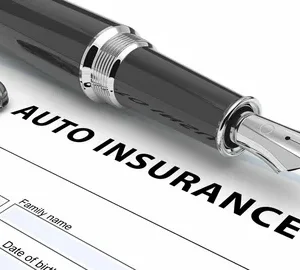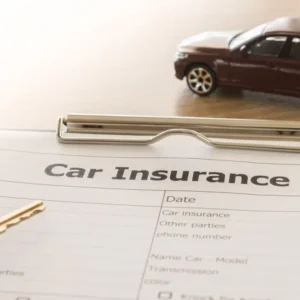Introduction
Getting slapped with a speeding ticket can feel like a double whammy: first the sting of the fine, then the looming increase on your car insurance premium. In 2025, as rates continue to climb—up 26% in 2024 and projected to rise another 7% this year—finding ways to soften that financial blow has never been more urgent (Kiplinger). Fortunately, there are proven strategies you can implement immediately to bring your premium back down, even after a recent infraction. In this post, we’ll explore 10 proven ways to instantly lower your car insurance premium after a speeding ticket in 2025, complete with key comparisons, actionable insights, and SEO-friendly headings for easy navigation.
Why Speeding Tickets Cause Premium Increases
Speeding tickets signal to insurers that you pose a higher risk behind the wheel. On average, a single speeding ticket can hike your full-coverage rate by 20–30%, with some states seeing spikes up to 39% (Insurance.com, The Baldwin Group). Insurers factor in:
- Violation severity (mph over the limit)
- Frequency (one-off vs. repeat tickets)
- Driver profile (age, credit, location)
Understanding this risk assessment helps you target the right strategies to rebuild your “good driver” status faster.
1. Take a Defensive Driving Course
Many insurers offer discounts of 5–15% for completing an approved defensive driving course. These courses not only refresh your skills but demonstrate commitment to safer driving.
- How it works: Enroll in a state-approved program (EINSURANCE Defensive Driving) and submit your completion certificate to your insurer (EINSURANCE).
- Savings timeline: Discounts typically apply immediately upon policy renewal.
2. Raise Your Deductible
Opting for a higher deductible can slash your premium by up to 20% (EINSURANCE). Be sure you have the funds to cover the deductible in case of a claim.
3. Bundle Your Policies
Combining auto with home or renter’s insurance often earns a multi-policy discount of 10–25%. Bundling simplifies billing and solidifies customer loyalty in insurers’ eyes (Progressive).
4. Shop Around and Compare Quotes
Insurance rates vary wildly between carriers. After a ticket, obtain at least five quotes to identify the best deal:
- State Farm
- GEICO
- Progressive
- USAA (for military families at $26/month post-ticket)
- Small regional insurers
Pro Tip: Use an online comparison tool like NerdWallet’s car insurance comparison to streamline your search (NerdWallet).
5. Enroll in a Telematics Program
Also known as “black box” insurance, telematics programs monitor your driving behavior (speed, braking, cornering) to reward safe habits with discounts up to 30%. While early adopters saw glitches, modern systems have improved accuracy and fairness (The Times).
6. Ask for Ticket Forgiveness or Dismissal Options
Some insurers offer one-time forgiveness for a minor moving violation. Even if your insurer doesn’t advertise it, call and ask—you may qualify if you’ve held a clean record for several years (EINSURANCE).
7. Improve Your Credit Score
In most states, better credit translates to better rates. Raising your score by 50+ points can lower premiums by up to 10–20% (Progressive). Strategies include:
- Paying bills on time
- Reducing revolving debt
- Avoiding new credit inquiries
8. Adjust Your Coverage Limits
If you drive an older car, consider dropping collision or comprehensive coverage once the vehicle’s value falls below the annual premium. This move can cut costs immediately, though it leaves you self-insured for damage claims.
9. Leverage Good-Driver and Loyalty Discounts
Even after a ticket, maintaining a clean record thereafter can restore “good-driver” discounts—often 10–15%—over consecutive years. Similarly, staying with the same insurer typically yields loyalty discounts.
10. Switch to Usage-Based or Pay-Per-Mile Insurance
If you’re driving less—perhaps commuting less post–ticket stress—pay-per-mile policies can be ideal. Rates are based on actual road time, often leading to significant savings for low-mileage drivers.
| Strategy | Typical Discount | Time to Benefit |
|-----------------------------|------------------|--------------------------|
| Defensive Driving Courses | 5–15% | 1–3 months (renewal) |
| Higher Deductible | 10–20% | Immediate |
| Policy Bundling | 10–25% | Next billing cycle |
| Quote Shopping | Varies by carrier| Immediate (new policy) |
| Telematics Programs | Up to 30% | 6–12 months |
| One-Time Forgiveness | Varies | Upon request |
| Improved Credit Score | 10–20% | 3–6 months (score bump) |
| Coverage Limit Adjustment | Varies | Next renewal |
| Good-Driver Discounts | 10–15% annually | Over time (3+ years) |
| Pay-Per-Mile Insurance | Highly variable | Immediate (meter install)|
Key Comparisons & Implications
- Immediate vs. Long-Term: Raising your deductible or dropping coverages yields immediate savings, whereas defensive driving courses and credit improvements take time.
- Risk vs. Reward: Higher deductibles and reduced coverage shift risk to you; telematics and courses are safer bets.
- Behavioral Impact: Programs like telematics not only lower costs but encourage permanent improvements in driving habits.
Conclusion & Next Steps
A speeding ticket doesn’t have to derail your budget. By combining short-term tactics (deductible hikes, policy shopping) with long-term strategies (defensive driving, telematics), you can regain control of your premium in 2025’s competitive insurance market. Start by requesting quotes today, enrolling in a driving course, or calling your insurer about forgiveness programs.
Ready to save?
- Call your insurer now—ask about ticket forgiveness and defensive driving discounts.
- Get five quotes using our favorite comparison tools.
- Enroll in telematics to prove your driving chops.
Your wallet—and your future self—will thank you.
Drive safe, save smart!






